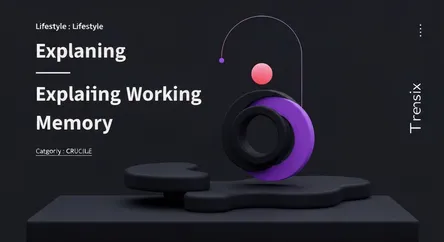Lifestyle
Explaining Working Memory

Discover what working memory is, why it's a trending topic in education and mental health, and how it impacts daily learning and cognitive tasks.
What is it?
Working memory is a core cognitive function that acts as the brain's mental workspace. It allows us to temporarily hold and actively manipulate information to carry out complex tasks like problem-solving and learning. Unlike passive short-term memory, which just stores data, working memory is an active process. You use it when calculating a tip in your head, following multi-step directions, or remembering what you were about to say in a conversation.
Why is it trending?
The concept is gaining traction due to its strong link to academic achievement, ADHD, and overall cognitive health. With the rise of "brain training" apps and personalized learning, techniques to enhance working memory are highly sought after. Educators and parents are increasingly aware that understanding a child's working memory capacity is key to addressing learning difficulties. As research on cognitive aging advances, maintaining working memory has also become a popular goal for adults seeking to stay mentally sharp.
How does it affect people?
Working memory profoundly impacts daily life. A strong capacity is essential for reading comprehension, mathematical reasoning, and staying focused. It allows individuals to block out distractions and remember what to do next. Conversely, a weak working memory can lead to challenges with organization, following instructions, and completing tasks that require mental juggling. This can manifest as academic struggles in children or forgetfulness and difficulty multitasking in adults, impacting overall performance.